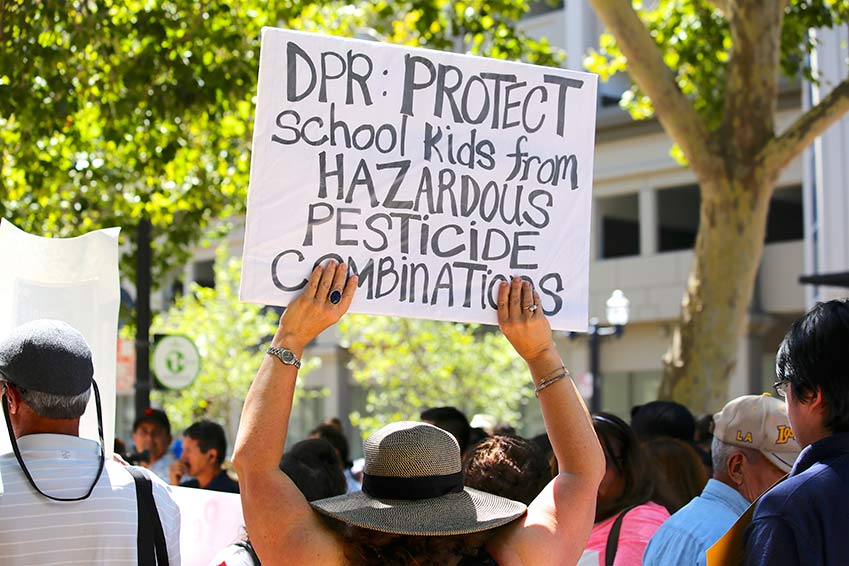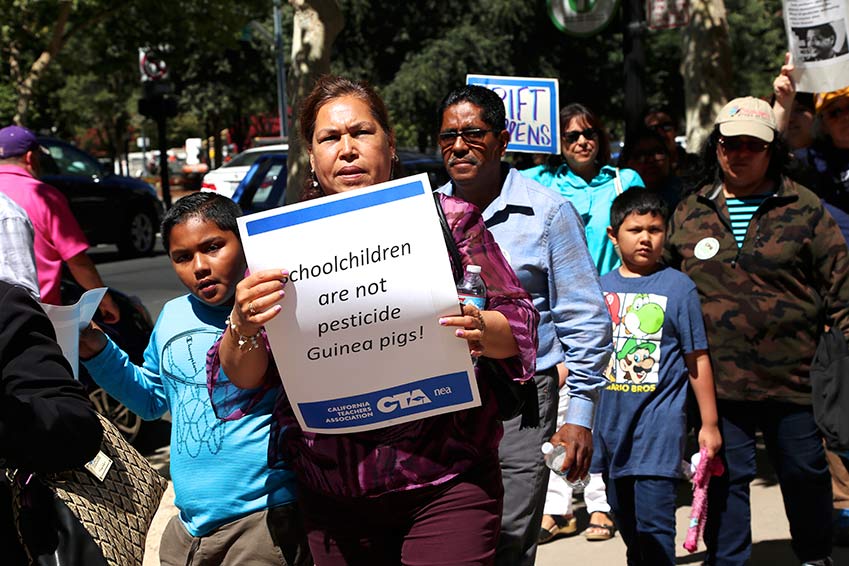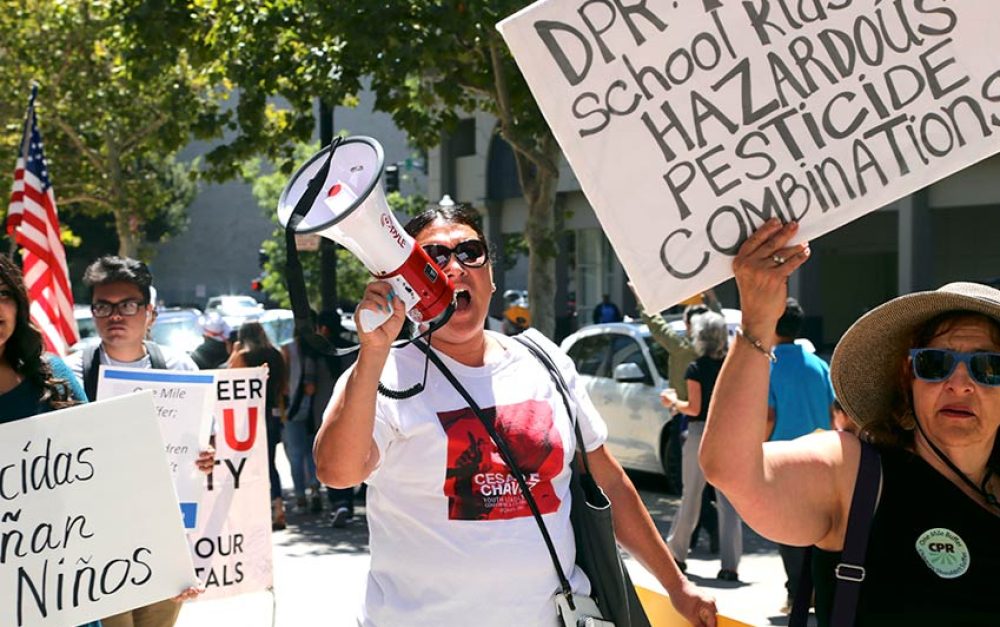Air blaster. Aerial spraying. Fumigation. Unless things change, another school year will go by with pesticides being applied by these methods right outside classroom windows.
That’s why we hand-delivered boxes carrying over 26,000 comments demanding protections for schoolkids last Tuesday, as a crowd gathered outside the California Environmental Protection Agency and its Department of Pesticide Regulation (DPR). With “back-to-school” just around the corner, frustrated teachers, parents, grandparents and students pressed state officials to limit the use of volatile and potent pesticides near school campuses.
In a month that’s appropriately focused on race and #BlackLivesMatter, we also raised concerns surrounding systemic racism. According to the California Department of Public Health, Latino schoolchildren are nearly twice as likely as their white counterparts to attend schools in close proximity to heavy and hazardous pesticide use.
It’s hard to believe that more than 15 years after some pesticides were banned for indoor use due to their impacts on children’s brains and developing bodies, they are still sprayed next to places of learning. And virtually nothing has happened since DPR’s listening sessions over a year ago.
Here’s Ana Barrera, a Salinas public school teach and labor delegate for the Salinas Valley Federation of Teachers:
We’ve waited too long for DPR to unveil their plan to protect children in California from chemicals that are associated with some truly horrific health harming agents that are affecting our children. These chemicals have been linked to cancer, asthma, ADHD, autism and other damage to children’s neurological and reproductive systems. With the new school year fast approaching, it’s time for DPR to act.
Celebrating 20 years of activism
Last Tuesday also marked the 20 year anniversary of the Californians for Pesticide Reform (CPR) coalition, a group of more than 190 organizations across the state working together to advance fair and green food and farming. As one of the founding organizations, PAN has remained a member of the steering committee throughout, working side-by-side with partner groups to try to fix California’s broken food and farming system.
The work is far from easy, given the powerful interests involved. But last week in a room filled with 170 people sharing photos, food and songs, it felt very possible.

The event was also an opportunity to honor people and organizations that have played critical roles in the work over the years, including former state senator and current Air Resources Board member Dean Florez, the California Federation of Teachers and the California Teachers Association.
What really stood out was the surprise award for Domitila Lemus, one of the most dedicated but least well known leaders in the movement today.
Domitila was moved to action after a major pesticide drift incident in her community. In a rare challenge, she struggled to find words on Tuesday to recount the catalytic moment when her grandchild was exposed to pesticide drift. She now volunteers with El Quinto Sol de America, and regularly travels to Sacramento and Visalia to voice her concerns and press for better protections for San Joaquin Valley children.
The award Domitila received, the “Teresa DeAnda Community Leader Award,” honors the memory and legacy of another longtime CPR activist and leader.
S is for school spraying
Community concerns over pesticide spraying near schools are well justified. Last October, 28 Coachella Valley High School staff and students reported feeling ill after exposure to a pesticide that affects the nervous system. It was applied during school hours and within a mile of the school and with a smelly “odor mask,” which is how parents, students and faculty knew they were being exposed.
Despite all the clear evidence and concerns, it took six months for local officials to produce a report or any action at this majority Latino school. The result of that long-delayed investigation? A puny fine. $5000 total, instead of what should have been $5000 per each student or teacher impacted.

And this is just one incident. Many applications are not mixed with odors, and schools do not realize they are being exposed. The repeated and ongoing exposure to these pesticides is a persistent threat to communities.
That’s why clear, comprehensive rules are needed that limit dangerous forms of pesticide application, and why no-spray zones for volatile pesticides are needed for at least a mile around schools.
PAN and our CPR allies will be keeping the pressure on. State officials need to get their act together, before the bell rings on another school year.
Photos: Joan Cusick








